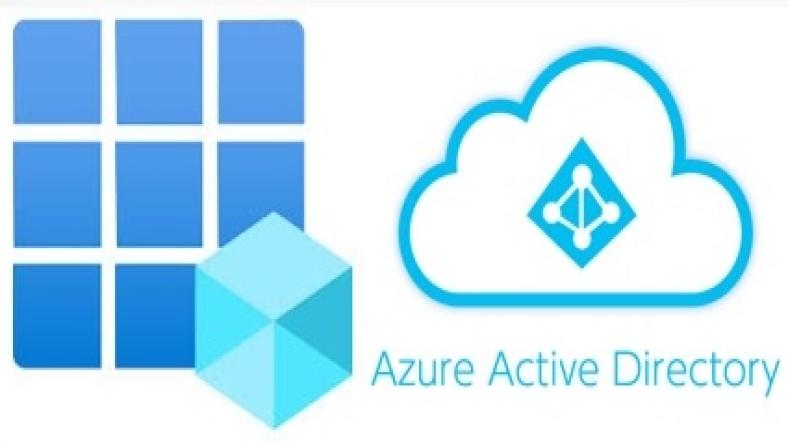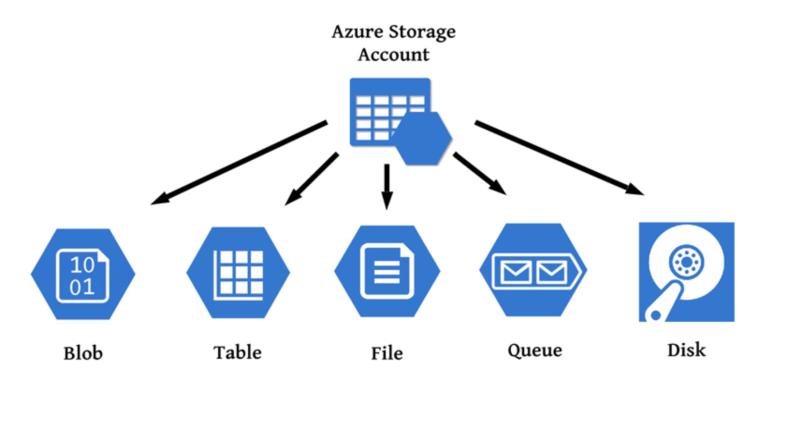In the modern world of cloud computing, managing identity and access is crucial to securing enterprise applications and data. Microsoft Azure provides a comprehensive identity and access management solution through Azure Active Directory (Azure AD). Whether you are managing an enterprise IT environment or building cloud-based applications, understanding Azure AD and Azure App Registrations is foundational to ensuring secure and seamless user and application experiences.
In this article, we will explore the key concepts behind Azure Active Directory and Azure App Registrations, and provide best practices for configuring and managing them. Additionally, we will dive into OpenID SSO for Admin Login as a critical use case of Azure AD that simplifies administrative access and improves security.
What is Azure Active Directory?
Azure Active Directory (Azure AD) is Microsoft’s cloud-based identity and access management service. It serves as the backbone for authentication and authorization in Azure, Office 365, and other Microsoft services. Azure AD helps businesses control access to resources, manage identities, and provide security for cloud and on-premises applications.
Azure AD is distinct from traditional Active Directory (AD), which is primarily used for on-premises identity management. While traditional AD is based on Windows Server, Azure AD operates in the cloud and supports a broader set of modern authentication protocols like OAuth, OpenID Connect, and SAML.
Key Features of Azure AD:
- Identity Management: Provides centralized identity management for users, groups, and devices. It allows administrators to create and manage user accounts, assign roles, and configure access policies.
- Authentication and Authorization: Azure AD supports Single Sign-On (SSO) for cloud apps, multi-factor authentication (MFA), conditional access policies, and more.
- Integration with SaaS Applications: Azure AD can integrate with thousands of SaaS (Software as a Service) applications, such as Salesforce, Slack, and Zoom, using pre-built connectors for authentication.
- Role-Based Access Control (RBAC): Azure AD supports RBAC for controlling user access to Azure resources based on roles assigned to users or groups.
- Self-Service Password Reset (SSPR): Users can reset their passwords without admin intervention, improving security and reducing helpdesk workloads.
- Conditional Access: This allows administrators to define policies based on user risk profiles, device health, and other factors to enforce security requirements before granting access to applications.
What is Azure App Registration?
An Azure App Registration is a crucial concept for developers and administrators when building and integrating applications with Azure AD. It enables Azure AD to recognize an application and establish trust between the app and the Azure AD tenant, allowing secure authentication and authorization for the app’s users.
When an app is registered in Azure AD, it is assigned a unique Application (client) ID, Directory (tenant) ID, and Client Secret (or certificate) which are required to authenticate the app and request access to resources.
Why Use Azure App Registration?
- Secure Authentication for Applications: App registrations are essential for securing cloud-based applications. By registering an app in Azure AD, you can configure how users authenticate to the app, use OAuth2 tokens for secure access, and integrate with various Microsoft APIs such as Microsoft Graph.
- API Permissions: When registering an app, you can define which Azure resources or APIs the app needs access to, such as Microsoft Graph, SharePoint, or custom APIs, and assign necessary permissions.
- Multi-Tenant Applications: Azure App Registration allows developers to build applications that can be used by multiple tenants, which is essential for building SaaS applications.
- Integration with Azure AD B2C: Azure AD App Registrations are also used to integrate apps with Azure AD B2C, enabling external users (e.g., customers) to authenticate to your app via social accounts (like Google, Facebook, etc.) or local accounts.
Key Components of Azure App Registration
- Application (Client) ID: A globally unique identifier for the application within the Azure AD tenant. This ID is used by applications to authenticate against Azure AD.
- Directory (Tenant) ID: The identifier for the Azure AD tenant, unique to each organization. It specifies the Azure AD directory where the application is registered.
- Client Secret/Certificate: A credential used by the application to authenticate itself to Azure AD. The client secret is typically used for confidential client applications, while certificates can be used as an alternative for more secure scenarios.
- Redirect URI: A URI that Azure AD will redirect the user to after they authenticate. This is commonly used in web applications to send the user back to the application after a successful login.
- API Permissions: The permissions required by the app to interact with APIs or other Azure services. Permissions can be Delegated (when a user is involved in the app’s flow) or Application (when the app operates autonomously).
- Authentication Protocols: Azure AD supports multiple authentication protocols, including OAuth 2.0, OpenID Connect, and SAML, which can be configured during the app registration process.
- Token Lifetime: The duration for which access tokens are valid. Access tokens are used to authenticate requests to APIs, and their lifetime can be configured based on your needs.
OpenID SSO for Admin Login
An important use case for Azure AD App Registrations is OpenID SSO (Single Sign-On) for administrative login. Single Sign-On (SSO) allows users to authenticate once and gain access to multiple applications without needing to re-enter credentials for each one. OpenID Connect (OIDC), an authentication protocol built on OAuth 2.0, is commonly used for SSO in Azure AD environments.
What is OpenID Connect (OIDC)?
Google Ad 1
OpenID Connect is an identity layer on top of the OAuth 2.0 protocol. It allows clients (such as applications) to verify the identity of end-users based on the authentication performed by an authorization server (in this case, Azure AD). Through OIDC, Azure AD can issue ID Tokens that contain user identity information and Access Tokens for secure resource access.
When using OpenID SSO for Admin Login, administrators authenticate once through Azure AD and gain access to various Azure and custom applications without needing to log in separately to each service.
Why Use OpenID SSO for Admin Login?
- Simplified Access Management: By enabling SSO for admin users, you reduce the administrative burden of managing multiple logins across different platforms. Admins can use their Azure AD credentials to sign into the Azure portal, applications, and third-party services.
- Improved Security: OpenID Connect enhances security by using modern encryption techniques, including token-based authentication. In addition, OpenID SSO can be combined with Multi-Factor Authentication (MFA) to provide an additional layer of security for admin users.
- Consistent Authentication Experience: OpenID SSO ensures that admins experience a consistent and seamless authentication flow, regardless of the application they are logging into, as long as it supports OpenID Connect.
- Scalability: For organizations with many administrators or multiple applications, OpenID SSO allows for centralized control over user authentication, making it easier to scale as the organization grows.
How to Set Up OpenID SSO for Admin Login
To enable OpenID SSO for admin login in your Azure environment, you need to perform the following steps:
- Register the Admin App in Azure AD:
- Go to the Azure portal, navigate to Azure Active Directory > App registrations, and click on New registration.
- Provide the required details (name, supported account types, and redirect URI for the admin portal).
- Note down the Application (client) ID and Directory (tenant) ID for later use.
- Configure API Permissions:
- In the Azure portal, under the registered app, configure the appropriate API permissions required for admin tasks.
- For example, you might need permissions to access the Azure Management API or Microsoft Graph to read user and group data.
- Set Up OpenID Connect Authentication:
- Under Authentication, configure OpenID Connect settings.
- Add the appropriate redirect URI that your admin application will handle after a successful login.
- Implement Token Validation:
- Implement token validation in your admin app by using libraries such as MSAL (Microsoft Authentication Library) or OpenID Connect libraries to validate the ID Tokens and extract user information (e.g., user role, tenant info).
- Enable Multi-Factor Authentication (MFA):
- To secure admin access further, enforce MFA for administrative users.
- This can be configured under Azure AD Conditional Access policies.
- Test and Deploy:
- Thoroughly test the OpenID SSO flow to ensure that admin users can seamlessly log in using their Azure AD credentials and access the necessary resources.
Best Practices for Azure Active Directory & App Registrations
1. Use Least Privilege Principle for Permissions
When registering an app in Azure AD, always adhere to the least privilege principle. This means only granting the app the permissions it absolutely needs to function. Excessive permissions expose the app and your system to unnecessary risk. Review app permissions regularly and revoke any unnecessary access.
2. Secure Client Secrets and Certificates
Client secrets should be stored securely, and certificates should be used for higher levels of security, especially in production environments. Avoid hardcoding client secrets in the application code. Instead, use Azure Key Vault to securely store and manage credentials.
Google Ad 2
3. Use Multi-Factor Authentication (MFA)
For any app that handles sensitive data, implement MFA for an additional layer of protection. Azure AD supports MFA, which helps prevent unauthorized access even if credentials are compromised.
4. Implement Conditional Access Policies
Conditional Access policies help you enforce security requirements based on user, device, and location factors. For example, you might require that only devices that meet specific security standards (e.g., managed devices) can access the app.
5. Monitor App Registrations and Usage
Regularly monitor app registration activity through Azure AD logs to detect any unusual behavior or potential security breaches. Use Azure AD’s reporting and auditing features to track application sign-ins and permission changes.
6. Use Managed Identity for Azure Resources
When developing applications that interact with Azure resources (such as Azure Storage or Azure SQL Database), use Managed Identity instead of app registrations with client secrets. Managed identities are more secure as they avoid storing credentials and allow Azure AD to manage identity automatically.
7. Review Token Expiry and Revocation Policies
Google Ad 3
Set appropriate expiration times for tokens to limit the window of opportunity for any compromised tokens. Implement token revocation where needed to invalidate access for compromised or stale tokens.
8. Support Multi-Tenant Applications
When building multi-tenant SaaS applications, ensure the app registration is configured to support users from any Azure AD tenant. You can enable multi-tenancy during the app registration process, allowing users from different organizations to authenticate and use your app.
9. Test App Registration in a Non-Production Environment
Before registering an app for production use, thoroughly test the app registration in a non-production environment to ensure everything works as expected, including authentication flows and permissions.
Conclusion
Azure Active Directory (Azure AD) and Azure App Registrations are integral parts of the Microsoft Azure ecosystem, offering robust identity and access management capabilities for both enterprise users and developers. By understanding these concepts and implementing best practices, organizations can ensure secure and efficient management of identities, applications, and resources in the cloud.
Additionally, enabling OpenID SSO for Admin Login streamlines the administrative experience, enhancing both security and convenience. Whether you're managing internal resources, building cloud-native apps, or integrating third-party solutions, Azure AD and App Registrations provide the tools necessary to safeguard your environment while maintaining flexibility and scalability.
Thanks for reading the article, for more Science & Technology related articles read and subscribe to peoples blog articles.















